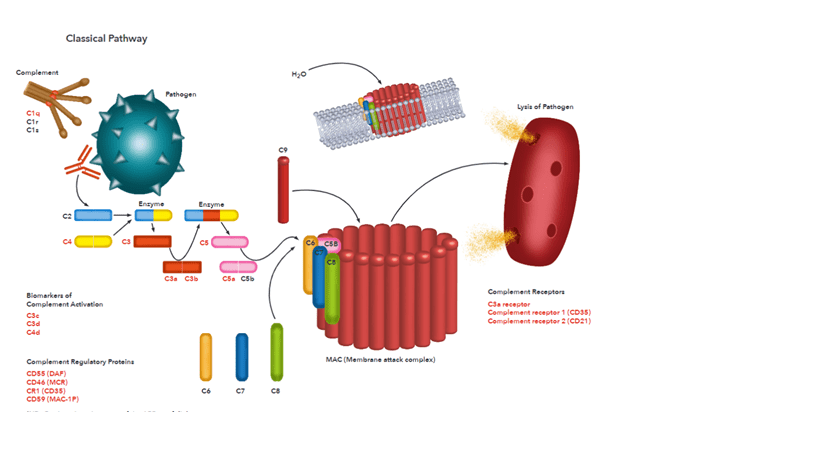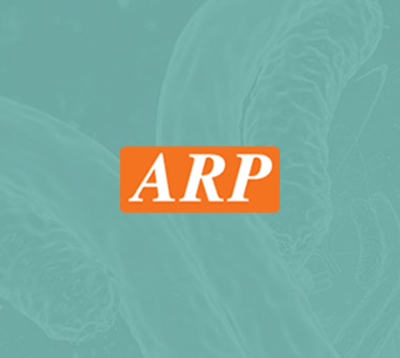Complement System
Complement System Product Focus
The complement system is part of the innate immune system and provides a mechanism to attack the cell membrane of pathogens and promote inflammation. There are 3 main pathways (classical, alternative and lectin) which differ in how they are activated but converge in a similar downstream response – mainly enhancing phagocytosis by opsonisation, producing chemoattractants and formation of the membrane attack complex which creates a pore in the bacterial cell membrane leading to cell wall rupture.
The classical pathway can be activated when C1-complex (C1q, C1r and C1s) binds to IgM or IgG antibodies in complex with antigen. This provides a link between the adaptive and innate immune responses. It can also be activated if C1q binds directly to a pathogen. The alternative pathway can proceed via spontaneous activation of compliment cascade proteins. Finally, the lectin pathway is activated by binding of mannan binding lectin in the blood to mannose containing carbohydrates present on the surface of some pathogens.
At least 30 different proteins are involved in aspects of the compliment pathway and some, like C3, are abundant in plasma. Complement activation needs to be well regulated and inappropriate complement activation or deficiencies in complement regulation have been implicated in a number of diseases. A number of complement pathway proteins are therapeutic targets, including C5 (eculizumab), which was approved by the FDA in 2007 [3].
Complement proteins can also be utilised as protein biomarkers for a variety of disease states. For example, C4d deposition in tissues is used as a marker of Antibody Mediated Rejection (AMR) in transplantation.
At ARP we provide a wide range of products to support your research. These include high-quality anti-complement antibodies, complement proteins and assay kits.
References
[1] Immunobiology: The Immune System in Health and Disease. 5th edition. Janeway CA Jr, Travers P, Walport M, et al.New York: Garland Science; 2001.
[2] Wong, E.K.S. & Kavanagh, D. “Diseases of complement dysregulation—an overview”. Semin Immunopathol (2018) 40: 49. https://doi.org/10.1007/s00281-017-0663-8
[3] Harris, C.L. “Expanding horizons in complement drug discovery: challenges and emerging strategies” Semin Immunopathol (2018) 40: 125. https://doi.org/10.1007/s00281-017-0655-8
[4] Ekdahl, Kristina N et al. “Interpretation of Serological Complement Biomarkers in Disease.” Frontiers in immunology vol. 9 2237. 24 Oct. 2018, doi:10.3389/fimmu.2018.02237




